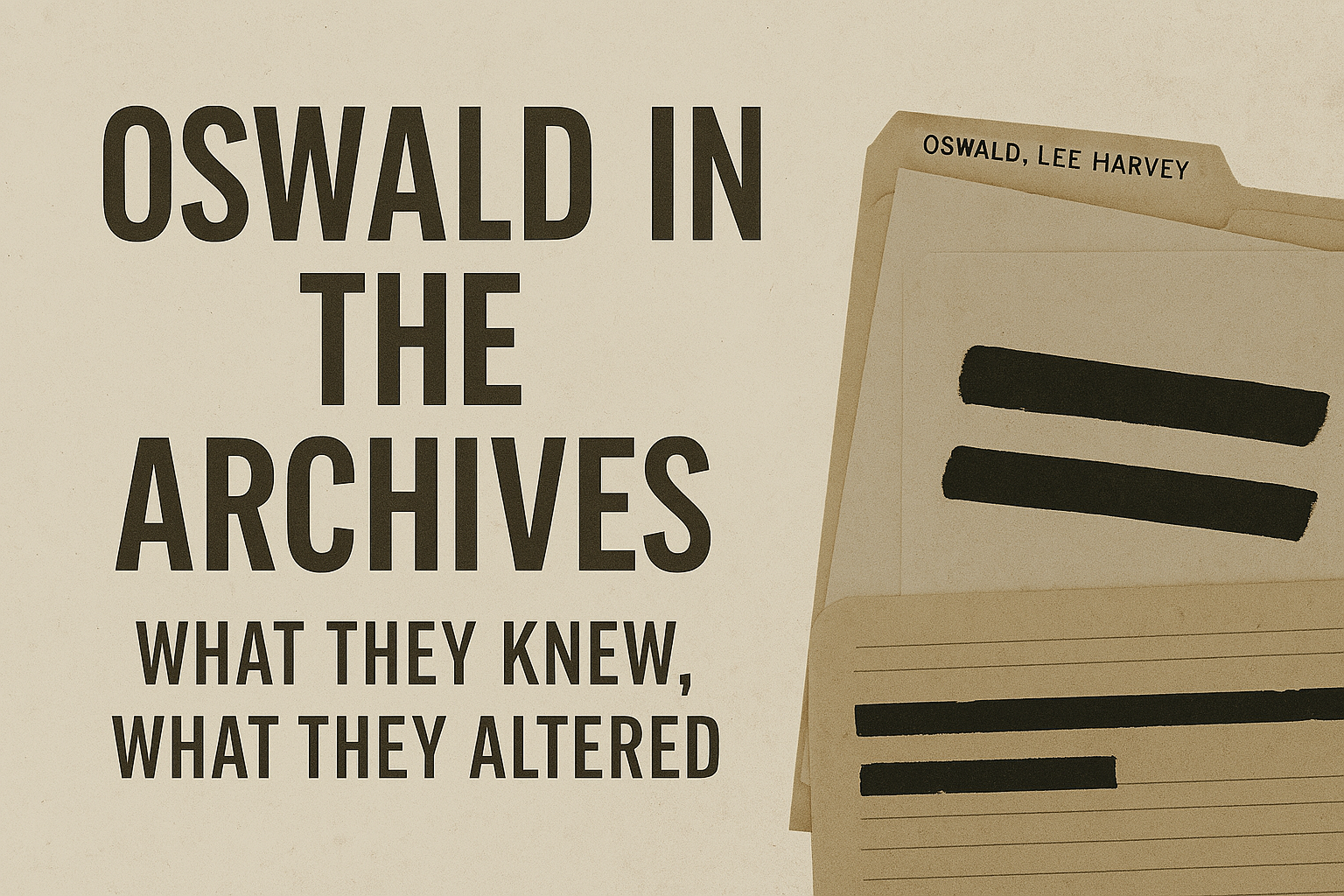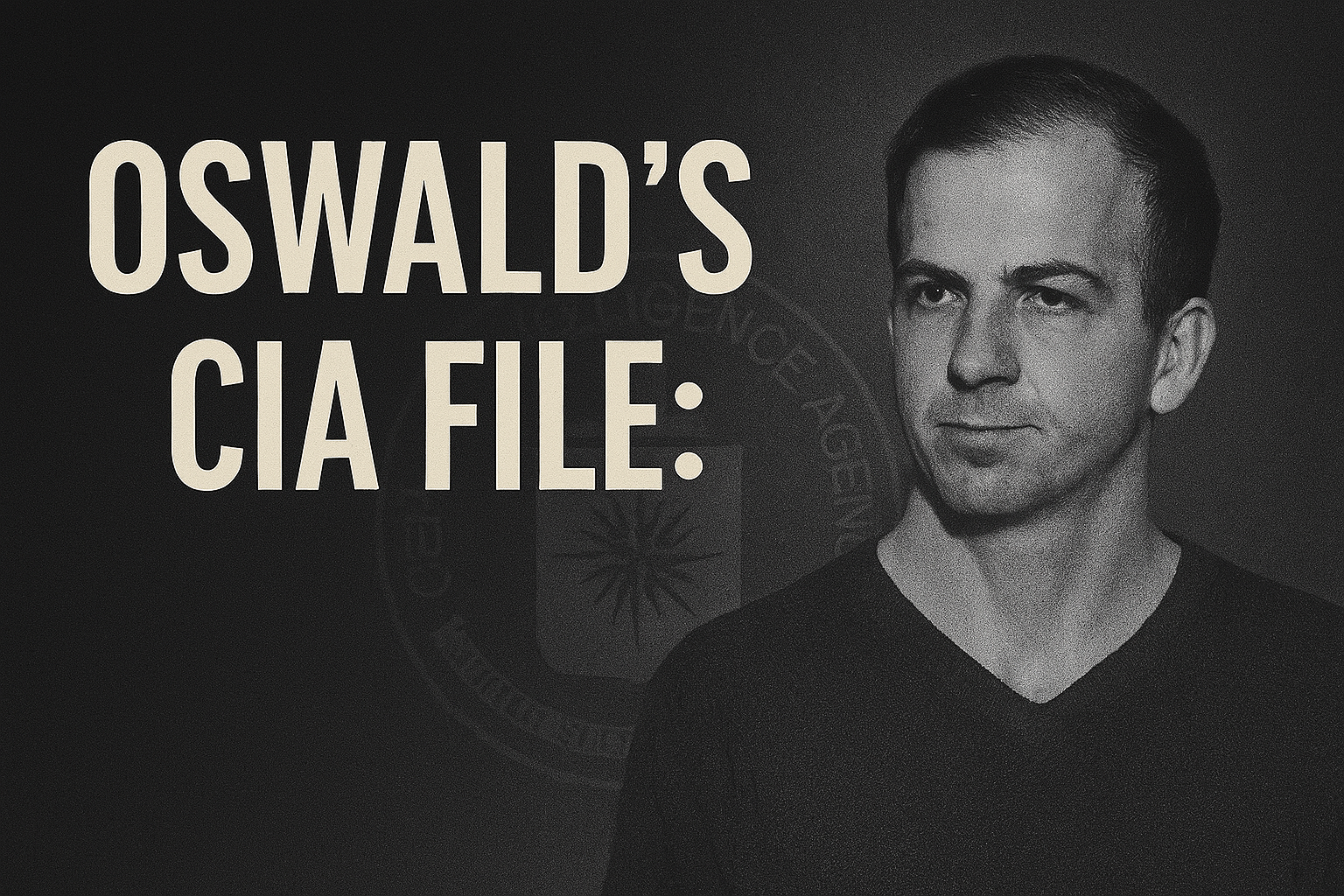The 2025 JFK files expose how the CIA selectively edited Oswald’s dossier-before and after the assassination.
🚪 The Man in the File
Oswald’s 201 File-his official CIA dossier-should have been a chronological record of concern. Instead, the 2025 release reveals a frankensteined narrative: selectively redacted, backdated, and misrouted records that left gaping holes in the timeline.
The files weren’t just passive records.
They were tools of narrative control-and someone was holding the pen.
📁 A File with a Life of Its Own
The documents show that:
- Oswald’s 201 file was created in December 1960, after his return from the USSR-but deliberately omitted early KGB interactions
- Key updates from 1962 and early 1963 were stamped but never routed to analysts
- One internal memo (March 1963) was flagged for “removal from primary circulation”
That memo included a warning:
“Subject maintains active contact with Cuban-affiliated groups. Recommend elevated monitoring.”
It never reached field offices.
🕵️♂️ After the Assassination: Retroactive Editing
In the days following JFK’s death, the 2025 files show an unusual pattern:
- Older Oswald-related files were re-reviewed by Angleton’s CI/SIG unit
- Several documents received new classification stamps and handling restrictions
- In one case, a file was backdated to appear as if it had been routed and reviewed-when internal logs show it was not
A 1964 note from a CIA legal liaison reveals:
“Necessary to preserve institutional integrity and distance from operational confusion. File restructuring authorized under CI/OPS discretionary order.”
Translation: clean it up.
🔥 The Deleted Documents
Multiple internal cables reference “redundant” or “non-essential” Oswald records being destroyed or marked for “deep storage.” These include:
- Field cables from Mexico City
- Psychological assessment drafts
- Tape logs from embassy surveillance
One 1965 message from Records Control:
“Reevaluation complete. Recommend destruction of Q74-Delta annex. Material adds no actionable value to current record.”
That annex reportedly contained Oswald’s full correspondence with the Fair Play for Cuba Committee.
🔚 The File That Wasn’t
What the 2025 JFK files make clear is that we’ve never seen the full Oswald file-not even close.
What we have seen is a version of the man that suited the official story.
They didn’t need to invent a patsy.
They just needed to edit him into one.

